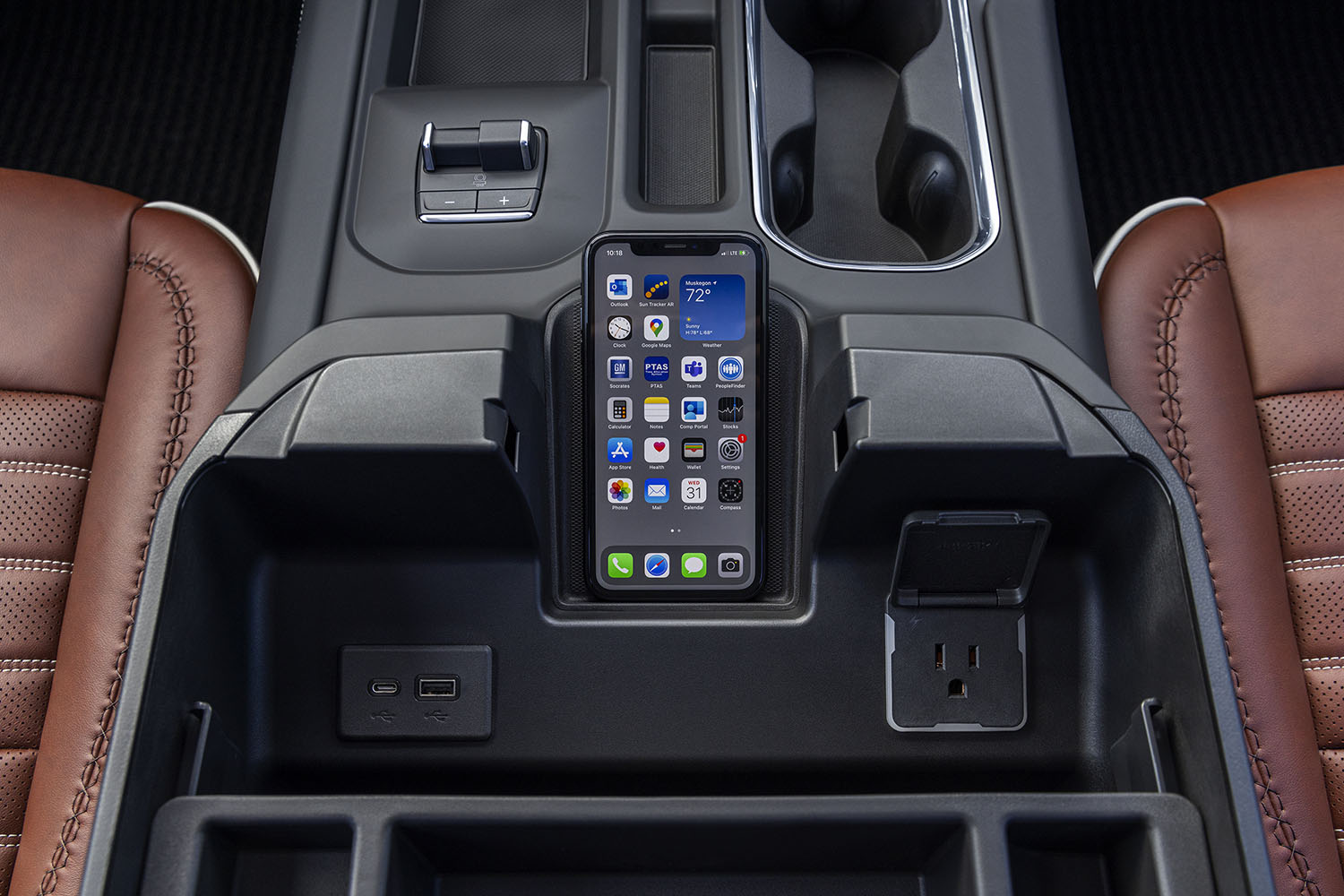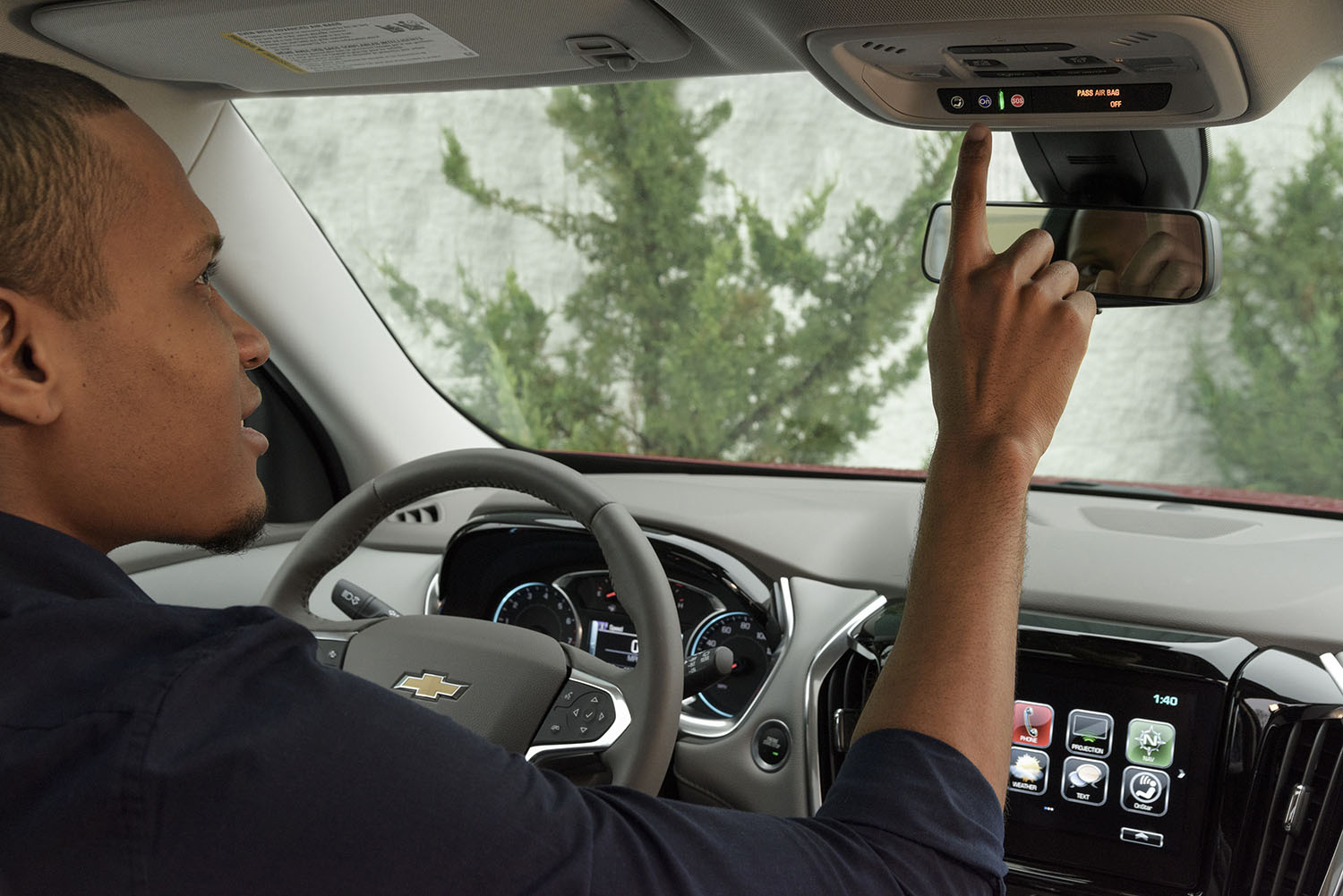What Cellphones Might Tell Us About the Future of Cars
The vehicles of tomorrow likely will deal with obsolescence and bloatware, just like today's smartphones.
 GMC
GMC
For most of us, mobile phones are disposable pieces of consumer technology. Apple, for example, releases a new iPhone nearly every year. As earlier incarnations of those iPhones age, they're less able to support newer operating systems and eventually become obsolete. The rate of technological smartphone progress is quick enough to render models that are only a few years old no longer capable of keeping up with their users' expectations.
Modern automobiles could head down a similar path in terms of technology and connectivity. We can learn many lessons from how cellphone companies have navigated the rapidly shifting technology standards in our society, from potential security risks to compromised functionality. Those lessons don't paint the brightest picture of the automotive industry's direction.
Older Tech Poses a Security Risk
The longer a piece of technology remains on the market, the more opportunities exist for hackers and others with malevolent intent to discover its vulnerabilities. Mobile phone manufacturers counter this issue by regularly releasing security updates to the software on their devices, including a mix of general operating system fixes and hardware-specific code that addresses potential security issues as they crop up.
There is a limit to how long a company is willing to put effort into maintaining security on older devices. Operating system updates and security patches are generally on offer for two to five years, depending on the brand. After that, owners are on their own. Some car companies, such as Volkswagen, have already stated that there are hard limits on how long they'll continue to support some of the software features in their vehicles.
While some technology enthusiasts are content to update their phones using custom firmware to stay on top of security, many consumers might be uncomfortable with the tech savvy required to go this route. For automobiles, it's even harder to imagine a robust community of programmers working to provide end-of-life support across a wide range of models and manufacturers. This gap could leave cars and trucks no longer supported by their brands vulnerable to potential hacks, including exploits that could lead to a vehicle being stolen or disabled.
Limited Updates Could Strip Away Functionality
Getting cut off from security updates is only one facet of how automakers ending their software support of a vehicle can affect the ownership experience. Those same operating system and software patches typically provide bug fixes and feature enhancements that can allow a car or truck to take advantage of new technologies.
One example is Bluetooth, the wireless standard that connects mobile devices and an automobile's infotainment system. Many versions of Bluetooth are available, some older than others. A newer Bluetooth device typically provides enhanced audio quality, improved connections, and other desirable features. If a vehicle uses an older version of Bluetooth, the primary link will work with a newer device, but the enhancements may not be engaged. Getting cut off from that upgrade pipeline could keep owners from using cutting-edge devices.
Navigation is another area that suffers when disconnected from software updates. Outdated maps are often unhelpful, and without a way to install a new set inside a navigation system, users may relegate that feature to the mental trash can.
 Chevrolet
Chevrolet
Compatibility Issues
In the mobile phone world, when older hardware reaches the end of its life, it is generally replaced with a newer handset. Regarding automobiles, this upgrade path is not nearly as clear-cut.
OnStar is a service for General Motors vehicles (including those from Chevrolet, GMC, Buick, and Cadillac, among others) with more than a million owners taking advantage of its combination of onboard Wi-Fi connectivity and other data services. The history of OnStar, however, includes two technological sea changes: the elimination of OnStar's original analog service in 2008 and the sunsetting of its 2G networks in 2022.
Shifts in the U.S. wireless network away from old technologies necessitated each of these changes. While some vehicles were offered upgrades to the newer digital systems that took over, others were out of luck or forced to transition to a mobile app instead. This same state of affairs affected many other automakers that offered telematics and remote services over the 3G network, which was itself removed from service in 2022.
Who Really Determines Your Feature Set?
Mobile phones today may arrive filled with bloatware, or apps installed due to partnerships with third-party companies eager to absorb more users into their customer base. Although this software is often easy to uninstall on a phone, dealing with it in an automobile can be less straightforward. It may become more challenging in the future to make sure your car has the digital features you want.
Currently, Android Auto and Apple CarPlay are two top-rated features in modern automobiles. At its 2022 Worldwide Developers Conference, Apple said CarPlay was available on more than 98% of cars in the U.S. and that 79% of vehicle buyers rated the app as important to their driving experience. And yet, even with an enormous installation base and evident customer enthusiasm, that's no guarantee that future vehicles will continue to include them.
In 2023, GM announced that it plans to phase out Android Auto and Apple CarPlay compatibility from its future electric vehicle lineup. The automaker's partnership with Google could mean GM is willing to overlook overwhelming consumer trends in favor of pushing an in-house infotainment system to help it better monetize driver data while further integrating its software and apps. Google has signed a similar deal with Ford. While there is no word on whether it will affect Apple CarPlay access, it does make room for Google products and services to occupy more digital real estate in models such as the F-150 and the Mustang.
The result for vehicle owners is likely to be less and less control over the apps that define their daily commute. Instead, drivers could be subjected to decisions made in a boardroom that can feel disconnected from consumers' actual needs and desires.
Written by humans.
Edited by humans.
 Benjamin Hunting
Benjamin HuntingBenjamin Hunting is a writer and podcast host who contributes to a number of newspapers, automotive magazines, and online publications. More than a decade into his career, he enjoys keeping the shiny side up during track days and always has one too many classic vehicle projects partially disassembled in his garage at any given time. Remember, if it's not leaking, it's probably empty.
Related articles
View more related articles